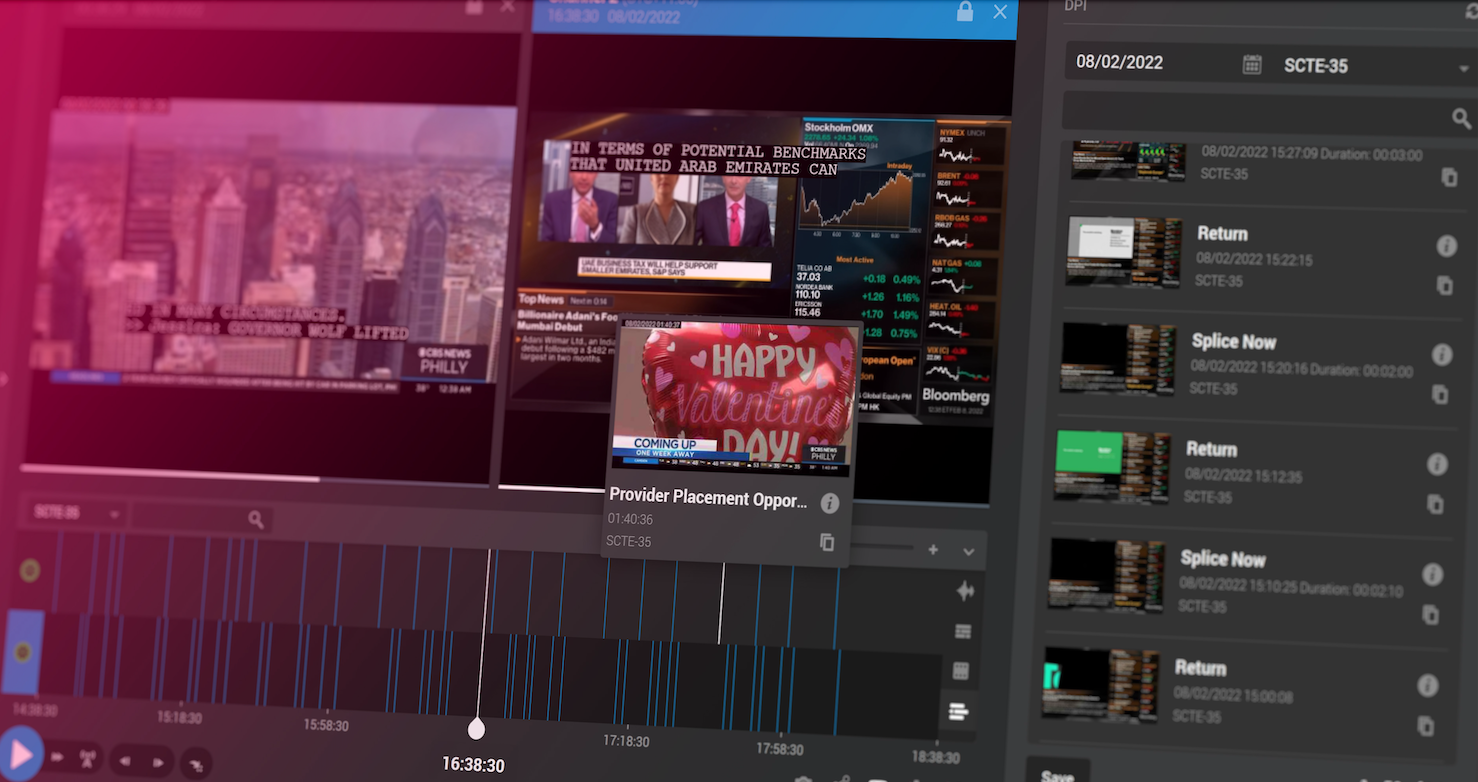
Monitoring by exception frees up operators and extends capabilities

Compliance is a crucial area in modern broadcasting. It ensures the quality of both the program and the technical outputs of television and streaming services. To guarantee these checks are reliable, a series of standards and guidelines drawn up by national regulators and industry bodies, such as the EBU, ITU and SMPTE, exist to which broadcasters, playout facilities and monitoring system manufacturers must conform.
Broadcasters need to make sure their compliance procedures meet the various forms of standardization because it not only ensures viewers get the best possible audio and video quality on whatever device they are watching — TV, laptop, streaming service or mobile — but that they protect themselves from regulatory action or fines if their output drops in editorial or technical standard.
To prove they are adhering to program guidelines, broadcasters rely on off-air recordings of their output. These are crucial in case of any viewer complaints about the content of programs and give TV stations access to the material in the form it went out, which is absolutely necessary in the case of live broadcasts.
Web-Based Interfaces Simplify Workflow
The transition from analogue to digital technology has streamlined this process. In recent years, web-based interfaces have been introduced that allow for a smoother implementation of recording functions, plus distributed access over enterprise networks. File-based operations, multi-channel streaming with review capability and automated logging and viewer ratings are now provided by software systems such as Mediaproxy’s LogServer and have become the norm for compliance monitoring.
Perhaps more crucially, this technology has provided reliable and necessary platforms for broadcasters to meet specific standards of technical quality set by regulators. Such systems are similarly a priority in commercial playout centers, which also have to satisfy the rules and can be financially penalized by their broadcaster clients if transmissions fall below expectations or are disrupted.
Beyond Engineering and Master Control
This emphasizes the important role compliance monitoring and logging plays in the broadcast production and distribution process. The misconception that these functions are solely the preserve of the engineering and operational departments is finally being dispelled because modern technology has extended the reach of monitoring beyond the master control room (MCR) backwards into other parts of the broadcast center and forwards into the further distribution chain.
During analog transmission days, there were only a small number of TV channels. This meant technical checking could be carried out in the MCR by operators looking at display screens and ensuring the accompanying audio was satisfactory through listening on loudspeakers and watching peak meters.
In today’s multi-channel world, that kind of personnel-heavy approach has, by technical and financial necessity, been replaced with automation to deal with the bulk of more mundane tasks, allowing operators to intervene only if complicated problems arise. This is possible through a combination of flexible software-based systems, which can be programmed for a wide range of applications and have the ability to be scaled up or down as a network expands or contracts, plus interactive multiviewers and exception-based monitoring.
Monitoring by Exception Boosts Efficiency and Reliability
The concept of monitoring by exception involves enabling operators to only scrutinize video or audio feeds if a problem has been detected and requires human intervention to solve it. It is now becoming a core technology that facilitates greater efficiency and reliability in how MCRs and playout centers work. Mediaproxy has implemented monitoring by exception on its Monwall interactive software-based multiviewer, which makes it now possible to configure thresholds for compliance problems such as loudness levels, signal loss and closed captioning. In addition, the system can also check for IP related bandwidth fluctuations, stream disruptions and ETR 290 (ETSI Technical Report 290) error messages.
The ability to scale logging and compliance programs is made possible through the increasing use of IT hardware and the cloud as the foundation of broadcast infrastructures, which can also be easily upgraded when new features are released. Monitoring by exception marks a move away from older passive multiviewers to software-based interactive displays. These allow operators and engineers to focus on a specific fault within a stream and use specialized tools to get into the transport layer and resolve any issues. This has created a highly efficient, reliable way to monitor multiple media streams that makes better use of operators’ time and skills.
By using this technique, operators are able to keep track of hundreds of channels rather than just looking at a few pictures on screens. As broadcasters continue the shift from SDI to IP networks, which are based on the SMPTE ST 2110 and 2022-6 standards, LogServer and the Monwall interactive multiviewer have the capability to handle multiple streams, for conventional TV and OTT alike, and are able to monitor both the native output and proxy media.
Such innovative and significant developments in technology are not limited to specialized monitor/logging tasks. In many ways they have made modern compliance systems a Swiss Army knife for a wide range of engineering functions. These can include SCTE-35 commercial splicing point, audio, watermark and playlist monitoring to user-driven activities such as publishing to social media and viewer ratings comparison, in addition to key compliance functions.
In all of this, reliability is a watchword. This has always been crucial in broadcast technology but with so many TV and streaming channels going to so many devices today, it is even more so for monitoring and compliance. Fortunately, the standards and advanced, flexible software-base technology are available to guarantee consistency and quality in an increasingly service of quality-oriented broadcast world.
Erik Otto is chief executive of Mediaproxy.
































Comments (0)